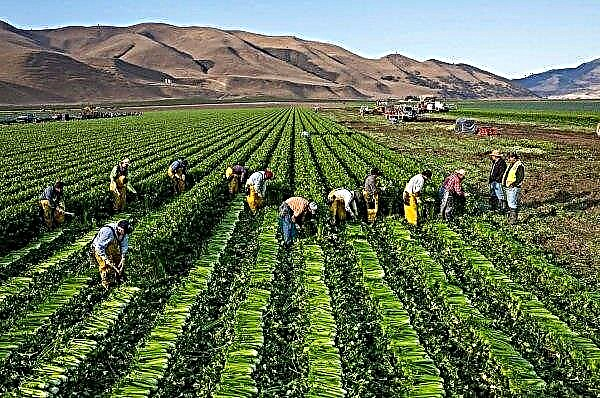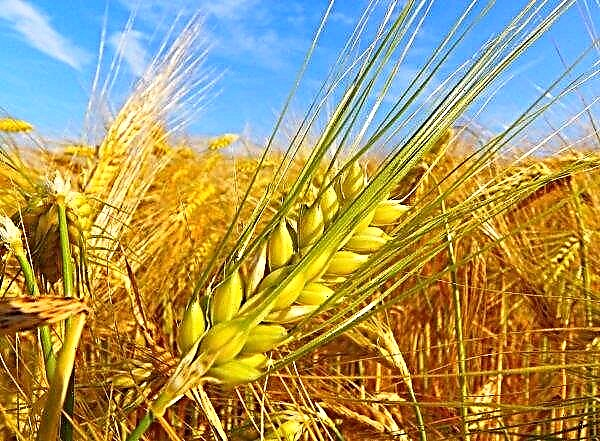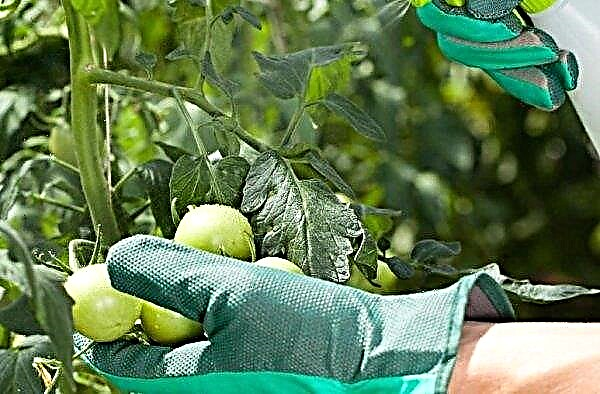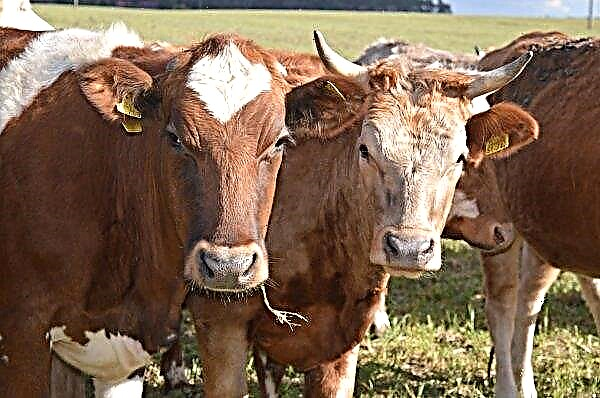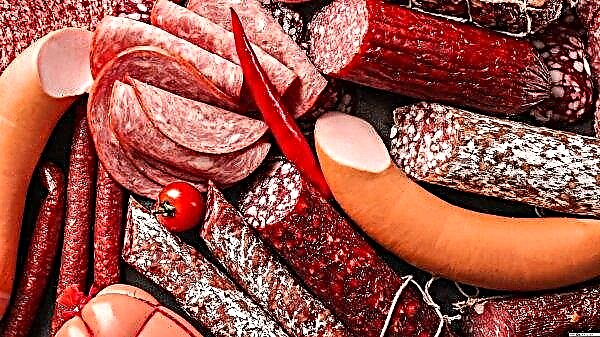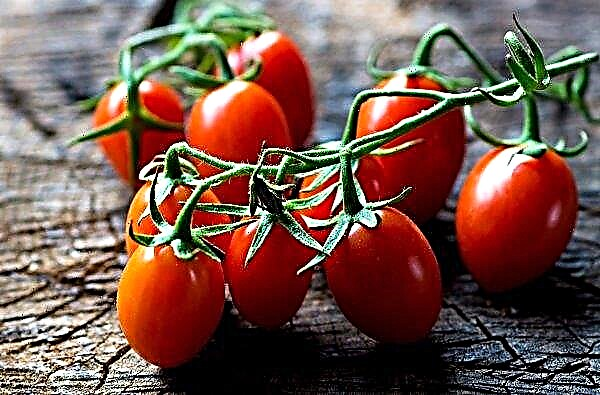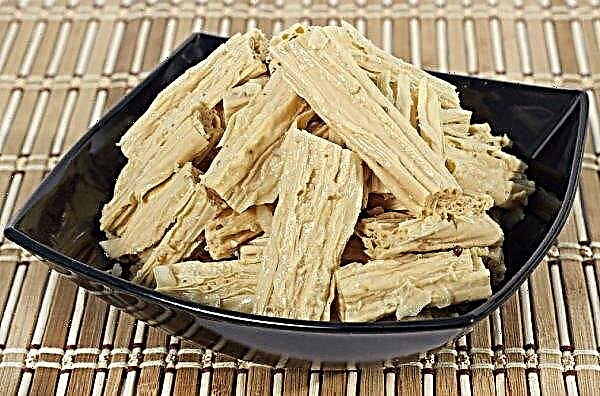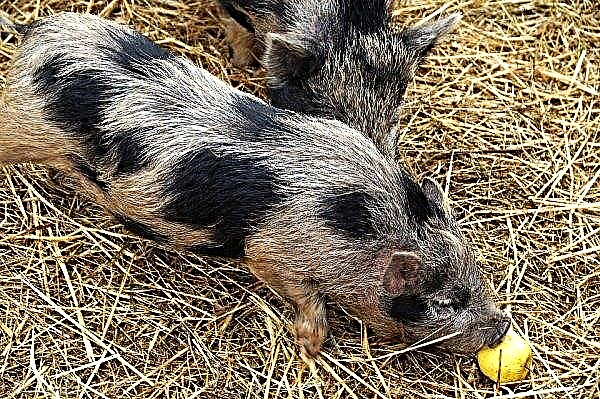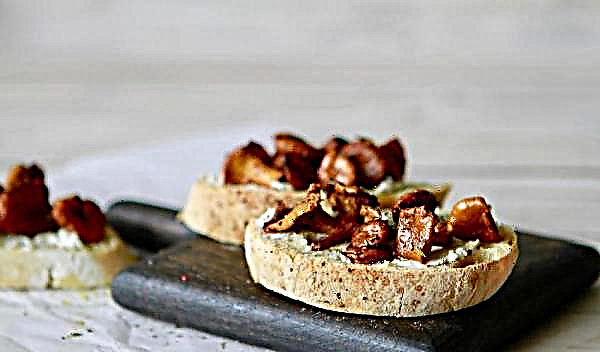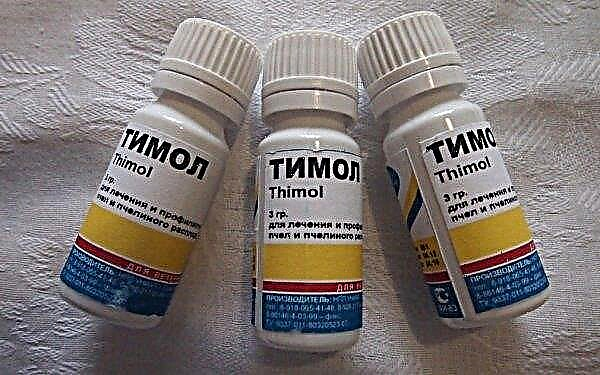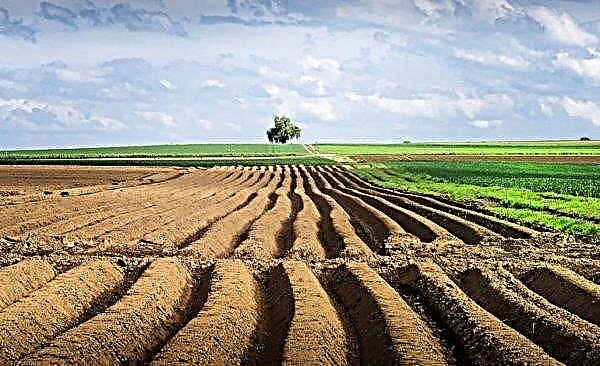Today, the market pleases with an abundance of vegetable products, but many gardeners, owners of their own plots, prefer to grow vegetables on their own, to be sure of their quality. Gardeners making the choice of planting material for cucumbers will find information on the wonderful Temp F1 variety useful.
Selection history
Temp F1 cucumbers bred by Semko-Junior. The direct creator of the hybrid is Yu. B. Alekseev. In 2006, a new variety was introduced into the State Register of the Russian Federation.
Grade description
Cucumbers belong to the parthenocarpic group, that is, each bush is able to form fruits without pollination.
They have such characteristics:
- the bush and shoots are small, with medium to high springiness (plants are less compact in greenhouses than in open ground);
- in the sinuses 3-5 fruits are formed (bunch type);
- the fruits have a beautiful presentation, slight tuberosity and small spikes. The flesh is crispy, with small seeds. Dimensions reach 5-7 cm, but it is recommended to collect with a length of about 5 cm. Weight - about 80 g;
- cucumbers are suitable for preservation and pickling, and are also used fresh.
Did you know? Among unusual varieties, cucumber-lemon is found. This is the result of the work of English breeders. In appearance, the fruits are very similar to lemons, although to taste they are ordinary cucumbers.
Advantages and disadvantages
- Among the "pluses" of these cucumbers are:
- suitable for greenhouse cultivation and for open ground;
- do not need pollination;
- early ripening of fruits (37–44 days after emergence);
- high productivity (up to 7 kg from 1 m² when harvesting gherkins and about 15 kg from 1 m² - long greenbacks);
- stable yield even in adverse conditions;
- fruits without voids, universal to use;
- high resistance to the main diseases of cucumbers;
- resistance to planting density, shade tolerance;
- tolerate temperatures up to + 40 ° C, rainy and cold weather;
- unpretentious in leaving.
Optimal time for landing
When sowing seeds in the soil, dates fall on approximately May 10–20. You can do this earlier if the air temperature is within + 15 ° С, and the earth warmed up to + 10 ° С ... + 12 ° С. Sowing seed material for seedlings is carried out in mid-April, so that the plants have time to grow to planting in a permanent place.

Ways to plant cucumbers
You can sow seeds directly on the beds, or after growing seedlings with subsequent transfer to the soil or greenhouse.
Seedling method
With the seedling method, harvesting begins 2 weeks earlier, and the fruiting period increases. Seedlings can be grown in a greenhouse or on a windowsill. In order not to injure the sprouts during transplantation, the best way is to use pots (cups). Of these containers, seedlings can be handled with an earthen lump when planting in a permanent place.
If the purchased seeds are not coated, you can carry out some manipulations with them:
- soak in warm water for an hour, and then wrap in a damp cloth and incubate at + 20 ° C for about 2 days. This procedure significantly accelerates germination;
- placing for an hour in the infusion of garlic (30 g per 100 ml of water) or a slightly pink solution of manganese, you can achieve disinfection;
- placing seeds wrapped in a damp napkin on the bottom shelf of the refrigerator for 2 days will ensure their hardening and increase stress resistance.
Important! If the seed is coated, then no preliminary procedures should be carried out with it.
The sowing sequence is as follows:
- A layer of sawdust is filled up to the bottom (about 1.5–2 cm).
- A mixture of peat and humus is prepared in equal proportions. 2 cups of ash and 2 cup of superphosphate are added to a bucket of this composition.
- The container is filled 7 cm with a prepared compound (to the edge you need to leave a distance of 2 cm).
- 1-2 seeds are placed in the pot to a depth of 1-1.5 cm.
- Plantings are watered with warm water.
- Before seedlings appear, the containers can be covered with film or paper to accelerate seed germination.
- It is desirable to maintain the temperature at the level of + 22 ° С ... + 26 ° С.
On the 4-5th day shoots appear, which need to be provided:
- good lighting so that the sprouts do not stretch; if necessary, organize additional lighting;
- lowering the temperature to + 20 ° C;
- adding a nutrient substrate as the stem grows, to form additional roots;
- watering as necessary so that the soil is constantly moderately moist.
3-4 days before planting, seedlings can be hardened at a temperature of + 12 ° C ... + 13 ° C. Seedlings Temp F1 does not dive.
Learn also about other parthenocarpic varieties of cucumbers:
Planting seedlings is carried out when a constant temperature of + 22 ° С ... + 25 ° С is established in the daytime and about + 18 ° С - at night.
Wherein:
- used seedlings should have no more than 3-4 real leaves;
- it is advisable to transplant in the evening or cloudy weather;
- the distance between the holes is 30 cm, and between the rows is about 50 cm;
- with trellis cultivation, the distance between the bushes is 20 cm;
- the base is sprinkled with a substrate slightly higher than before, this will stimulate the appearance of additional roots;
- seedlings are well watered and sprinkled with a layer of mulch.
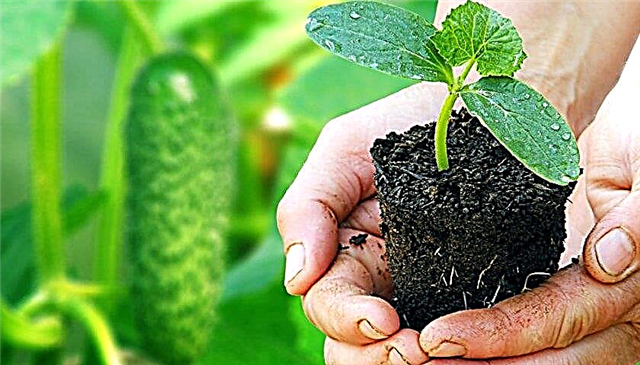
Reckless way
When sowing seeds directly into the ground, certain conditions must be observed:
- the place is preferable to choose a sunny one (at least grade and shade tolerant);
- the beds are placed perpendicular to the rays of the sun (so that all bushes are lit from the side);
- it is best to grow cucumbers after legumes, tomatoes or potatoes;
- seeds are planted to a depth of about 2-3 cm (not deeper than 3 cm);
- optimal soil is light and fertile;
- with heavy soil, sand is added to it (1/2 bucket per 1 m²);
- from autumn, manure can be added to future beds (about 10–20 kg per 1 m²).
But such a usual method of planting is known to many, it is much more interesting to try to grow cucumbers on "mobile" beds.
They will need such materials:
- polyethylene film (preferably black);
- small branches of fruit trees and other organic residues left after winter;
- earth, sand and ash;
- compost, humus, or a solution of Gumisol, Baikal, Tamira, or another EM preparation.

About a month before sowing, the preparation of the beds begins. Its width and height are about 20-30 cm. The length is chosen as you wish.
The process of arranging the beds consists of several stages:
- To approximate the size of the beds, several pegs are driven in at the corners and sides.
- The first layer consists of small branches of fruit trees and shrubs.
- For the second layer, mulch, leaves or grass is used.
- The upper 2-3 cm - earth, humus or sand.
- The bed is poured with a solution of ash (1 glass per bucket of water) and infusion of compost, humus or an EM-solution (prepared according to the instructions).
- From above, everything is covered with a film with the capture of the earth around (it prevents the growth of weeds).
- The bed is left for a month for "ripening".
You can install arcs on the bed and cover with lutrasil. In this case, landing can be done 1-2 weeks earlier (early May). When planting, the film is cut into 5–7 cm with intervals between the cuts of about 30 cm. A hole is made under each cut. 3-4 seeds are placed in one hole and watered with warm water.
Features of cultivation and care
Cucumbers of this variety are distinguished by good resistance to adverse factors, but to obtain optimal yields, they need proper care.
Watering and feeding
This vegetable belongs to hygrophilous crops, but at different periods it requires a different amount of watering:
- young plants are enough to water once a week. Watering is limited to flowering so that excess moisture does not inhibit the formation of flowers and ovaries;
- during the fruiting period, the crop needs abundant watering (so that the top layer of soil is saturated by 15 cm), which is repeated after 3-4 days;
- need to be watered with warm water (can be heated in the sun) in the afternoon;
- sandy loam soils require more water than clay soils;
- if the soil is not mulled, then in order to avoid cracking after each watering, loosening is carried out.

- on nutrient soils, 2 top dressings per vegetation are sufficient, and on poor soils, their amount is increased to 4;
- the first top dressing is carried out when 2 of these sheets are formed or on the 5th day after transplanting. 10 g of ammonium nitrate, 30 g of superphosphate and 10 g of potassium sulfate are added to a mullein diluted in a bucket of water and fermented for several days (1 kg). This amount is enough for 3-4 m²;
- during flowering, a second top dressing is carried out. For her, you can use a solution of bird droppings (1:15). 50 g of potassium sulfate, 0.5 g of boric acid and 0.3 g of manganese sulfate are diluted in a bucket of water;
- nutrient solutions are introduced into furrows (5–8 cm deep) dug at a distance of 10–15 cm from the base of the bushes;
- additional fertilizing is carried out, focusing on the appearance of plants. If cucumbers grow well and bear fruit, they do not need to be fed. Mullein (1 liter per bucket of water) can be used as additional nutrition;
- the day before fertilizing the plants are watered. When feeding, you need to ensure that nutrient solutions do not fall on foliage and flowers.
Important! You should be aware that cucumbers do not respond well to an overabundance of mineral fertilizers, so you should not abuse them and exceed the dose.
Shaping and tying a bush
The fruiting of the Temp F1 cucumbers is not affected by whether they grow on a trellis or are spread on the ground. And forming bushes is not necessary, since they are quite compact.
To strengthen unbound bushes, you can sprinkle the stems with earth in several places, this will cause additional root formation and strengthen the plants. It is also necessary to regularly remove yellowed leaves and stems, which will enable the formation of additional shoots.
Growing on a trellis will save territory, simplify fruit harvesting, improve air circulation, and produce clean. With this method, plants are planted at a distance of about 20 cm. Along a row, a trellis is constructed up to 2 m high. Bushes that have reached a length of up to 30 cm are tied.
The following garter methods are available for selection:
- between two supports, twine or rope is stretched in several rows (horizontal method);

- each stem is tied to a U-shaped support - this is a vertical way;

- with the hybrid method, the supports are fixed in the shape of a pyramid and the rope is tied horizontally between them.

Soil care
The soil on which cucumbers grow also requires certain measures:
- Moistened soil causes rapid growth of weeds, so they must be constantly removed;
- After watering and rain, regular loosening is required to prevent crusting. This should be done carefully so as not to damage the roots lying close to the surface;
- to avoid the appearance of peel, you can use mulching materials (sawdust or peat), and later, from time to time, slightly loosen them. Mulch will also prevent weed growth.
Grade Diseases and Pests
Pace F1 is resistant to cladosporiosis, powdery mildew, peronosporosis and viral mosaic.
However, diseases are still possible, and to prevent them, you need to adhere to some rules:
- use treated seeds for sowing;
- do not overmoisten the soil;
- conduct regular inspections of plants (immediately remove problem bushes);
- if diseases are detected, remove the diseased bush, and treat the neighboring plants with appropriate preparations.

Harvesting
The hybrid has not only early, but also long-term fruiting. Promotes the formation of fruits timely harvest (with a length of cucumbers 4-5 cm); it also increases productivity. With skillful care, you can pick up cucumbers from June to September.
This variety is great for large-scale cultivation for sale, as the fruits tolerate transportation well.
Did you know? Mini cucumber or melotria is appreciated for its decorative look. Its fruits (1.5–2.5 cm) are similar to small watermelons, however, they taste like ordinary cucumbers.
The hybrid of this variety has numerous positive reviews; Especially noteworthy are yield indicators, which often exceed expected ones. Cucumbers show good results both in the greenhouse and in the open ground. The variety will delight gardeners with a profitable crop of amazing taste.
Network user reviews:
ADVANTAGES:
Super fruitful
LIMITATIONS:
Expensive seeds
When I built the greenhouse, I started looking for the best variety of cucumbers for growing in the greenhouse. Having tried a lot of varieties and hybrids, I settled on the seeds of the Temp cucumber. The pace is a short-fruit parthenkapichny (self-pollinated) hybrid of cucumber. I want to warn you right away that the seeds are very expensive - about 75 rubles. per pack of 10 seeds. In mid-April, I plant cucumber seeds in cups for seedlings. And in late April, early May, I transplant seedlings into a greenhouse. From above I still cover with a film. After the cucumbers take root, they begin to grow. After three weeks, cucumbers begin to bloom and form an ovary. Although the plants at this moment are still not higher than 50 cm, but they are already beginning to bear fruit intensively. I tie them to the roof of the greenhouse and let them in one or two trunks. I pinch all the side shoots. After the cucumber reaches 2 meters in height, then it begins to bear fruit in full. Two three cucumbers appear in the internodes, which are quickly poured. I approve of the cucumbers only with manure, to which they react very well. Also, fruiting depends on the amount of sunlight and heat. Moreover, with abundant watering, the pace can withstand temperatures up to 50 ° C and bears fruit well. (But it is better not to risk it) Pollen on the ovaries does not sinter, and the ovaries do not fall off. Such high temperatures can not withstand pests - spider mites and whiteflies, so the plant is safe during this period. However, by the end of July, when the heat subsides, various parasites are activated. If you want to get a crop until late autumn, you need constant treatment with acaricidal preparations. The surface of the cucumber is covered with many small needles. Fruits genetically without bitterness. Cucumbers pace are very tasty and crispy, very good in pickling. In my opinion, this is the most productive among short-fruit varieties.







